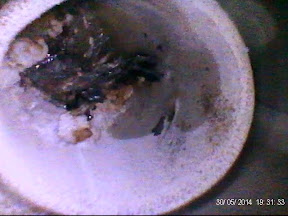Bill.Peyton
Well Known Member
I am using -4 hose and fittings
I am using -4 hose and fittings
The gauge reads between one and one and a half inch Hg.....
This one way vacuum check valve accomplishes a number of things, (all being good) and greatly enhances performance of your aircraft. I will attempt to touch on some of the benefits here. Should you have questions or require more information just give us a call. This assembly, when fitted to your engine will create a vacuum in the crankcase of 5 or 6 inches when in operation. It accomplishes this via two separate actions, # 1 exhaust flow over the bias cut tube, and # 2 the pumping action of the engine crankcase volume changing with rotation.
The valve is what Allan Neemo supplies, do you think the Napa valve could do better? I am not sure what to expect without comparison, maybe Allan can tell us what we could hope to find as far as vacuum goes.

One could assume that evacuating air from the crankcase also evacuates hot air in the same process. Maybe I am just fooling myself, it was a very cold day today.
What would happen to crankcase pressure if the check valve stuck open?
Or stuck closed?
A "whistle slot" would be a good thing to add to the hose. This is simply a short, 1" to 2" lengthwise slit in the tubing. The hose itself, and the negative pressure in this case, holds the slit closed in normal use. If the valve should get blocked the positive pressure in the hose would open the slit to relieve the pressure.

I wonder if your readings are due to being a six cyl vs four cyl? Number of exhaust valve openings are 50% more. Pressure pulses overlapping more?
That's correct.You have your tap located in the tailpipe of a 3-into-1?
Dan's fix with the double reed valve would only take care of the failure closed.
How about 2 check valves, one for each exhaust?
It would be highly unlikely to have 2 of those valves stuck at the same time
and double the efficiency.
Attaching the breather tube to a stub in the exhaust has been done around here for years and that alone helps keep the belly dry especially when used in conjunction with the air oil separator.



Who would like to temporarily relocate one EGT probe to the breather spigot location? Exhaust gas cools as it makes its way down the system. It might be useful to know the temperature at the breather port...
I am going to look if I still have a single probe egt laying around and use a hose clamp to clamp it to the exhaust pipe at the spigot attachment. The only problem with that is I would assume it would be hotter in the center than at the sides, which are acting as heat sinks, absorbing cooler air.
Dan, have you ever seen this with your arrangement?

Dan, will you tap another hole into the exhaust pipe or leave the second reed where it is?
